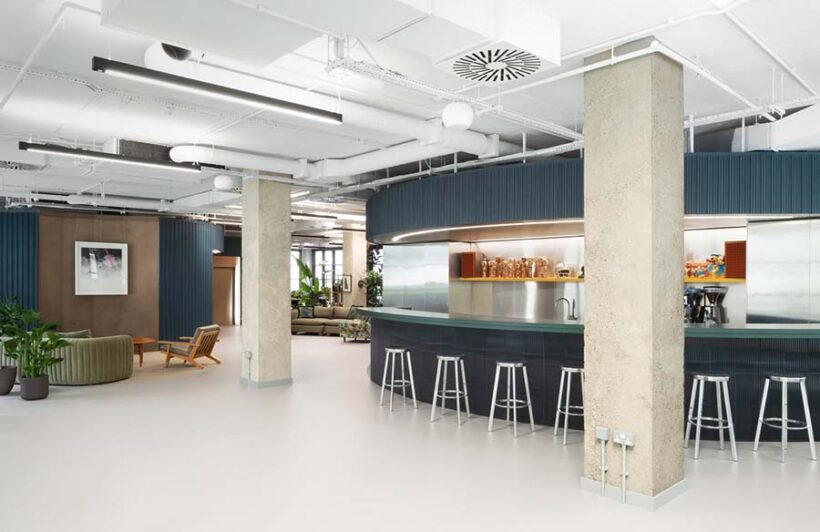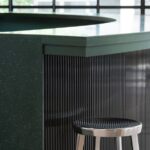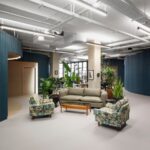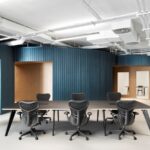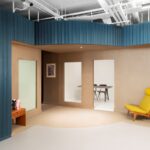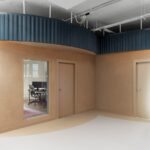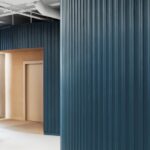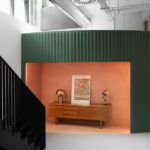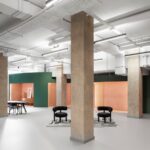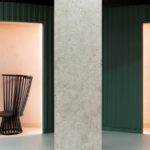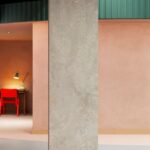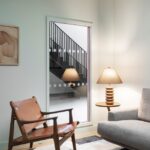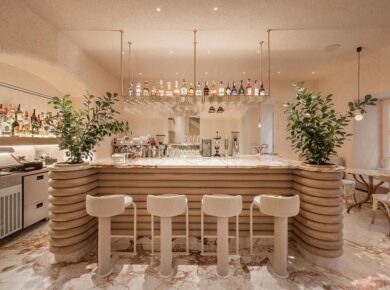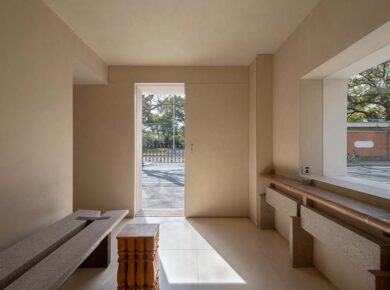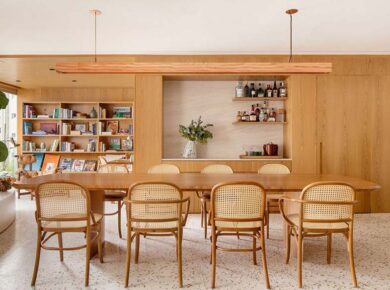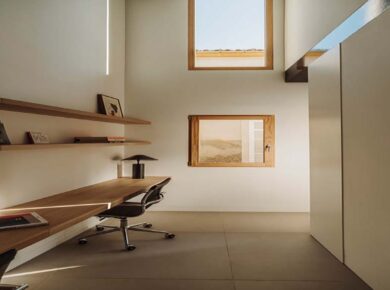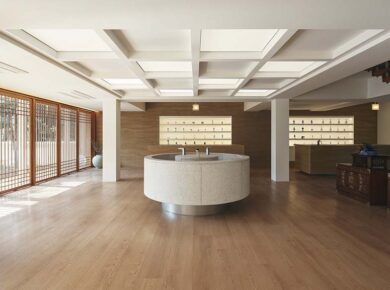Redefining Industrial Heritage
Bureau de Change Architects has transformed an East London studio for Black Kite, an independent visual effects and design studio, into a dynamic and creative workspace. Embracing the site’s industrial legacy, the design features intersecting cylinders that carve out a sequence of spaces, reflecting the heritage of the area.
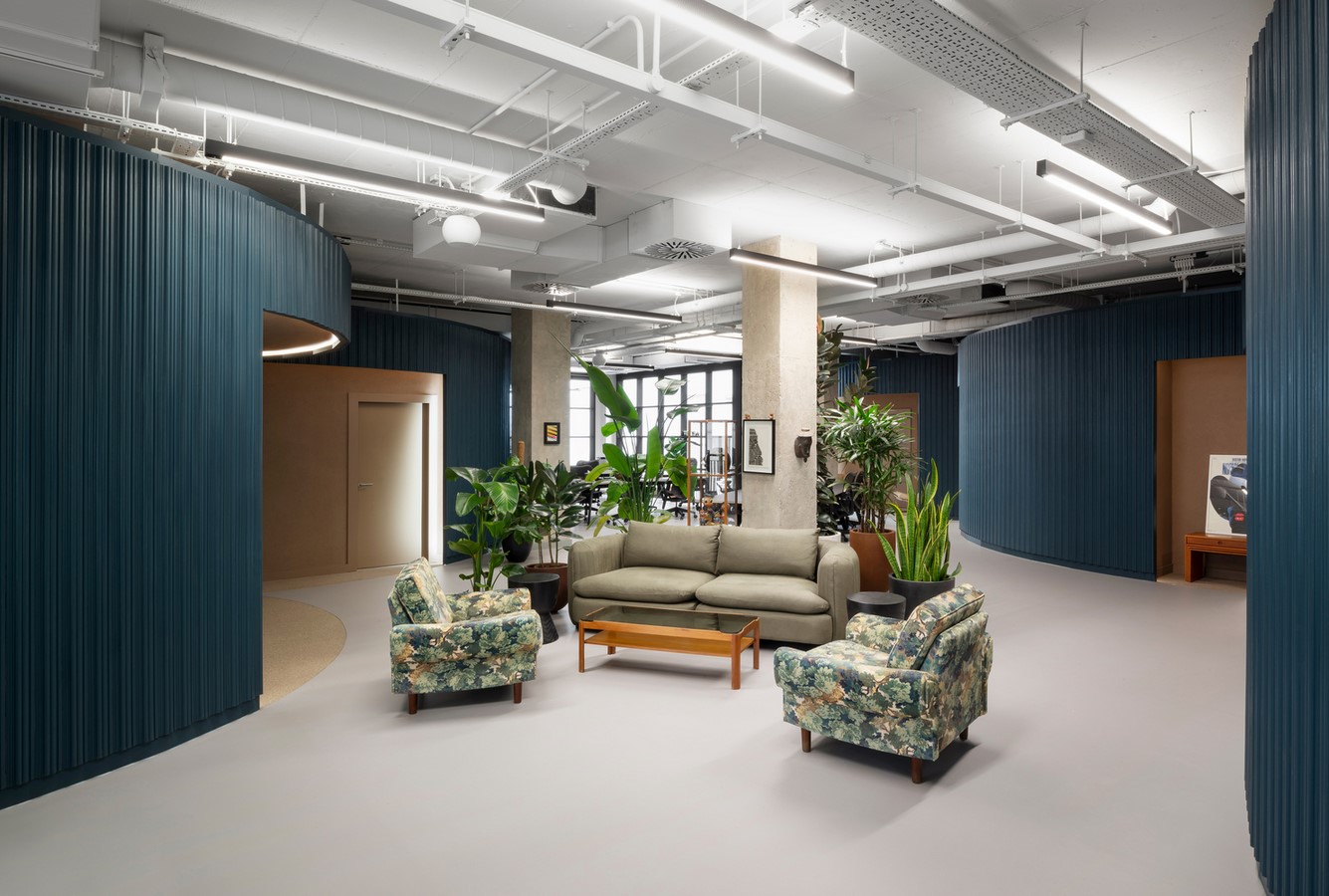
Spatial Strategy Inspired by Industrial Past
Responding to the client’s need for isolated production and visual effects suites, the architects drew inspiration from the site’s history as an Engineers and Iron Foundry. Geometric forms reminiscent of traditional iron kilns are translated into intersecting circles, each enclosing private working environments while allowing for transitioning thresholds.
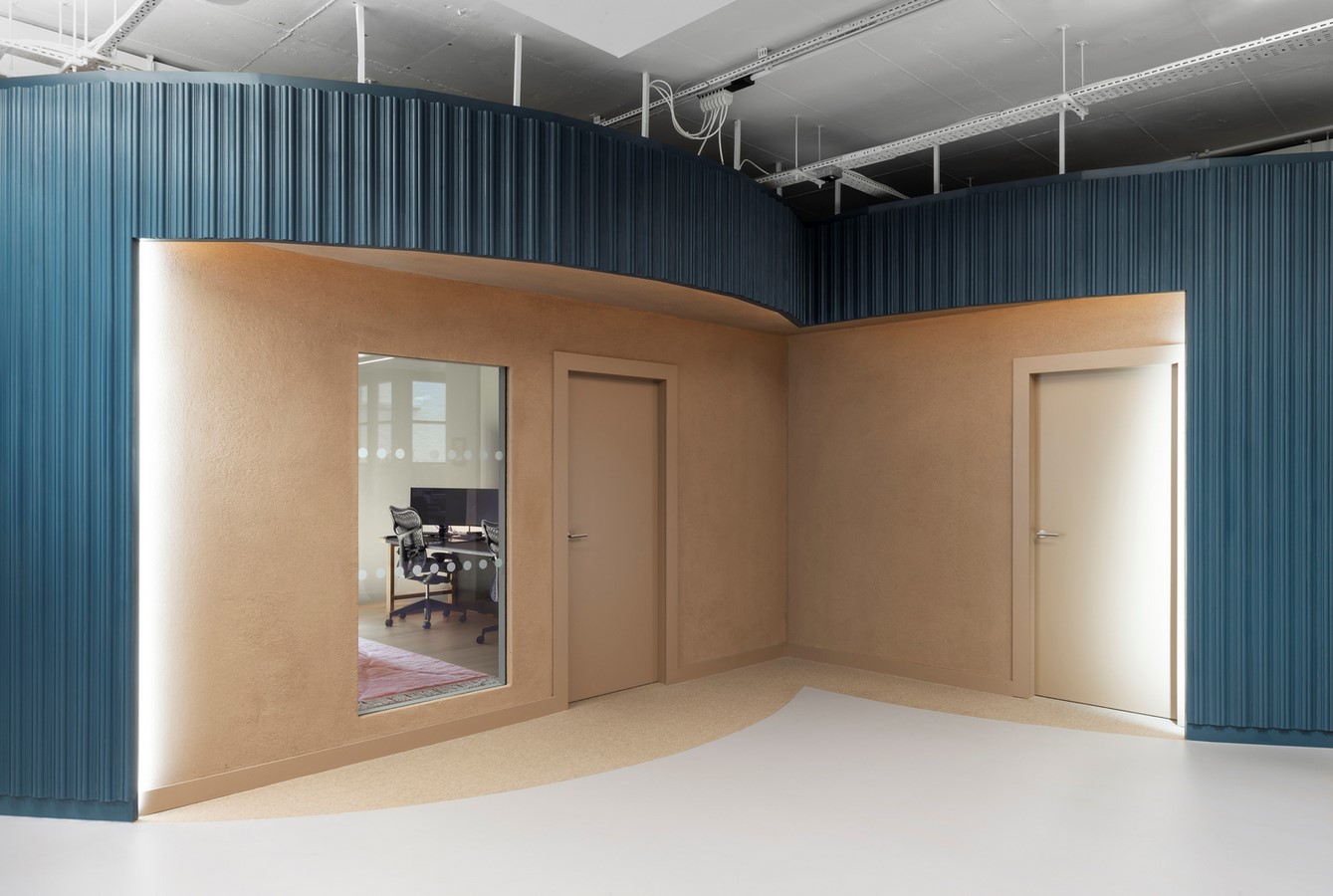
Creating Dualities within Singular Volumes
The design incorporates excavated intervals within the intersecting cylinders, creating semi-private breakout spaces that correlate with enclosed working suites. Finished with natural clay plaster, these cavities juxtapose sharp textures with warm surfaces, fostering a sense of duality within a unified volume. The strategic placement of excavations facilitates a seamless transition between different working areas.
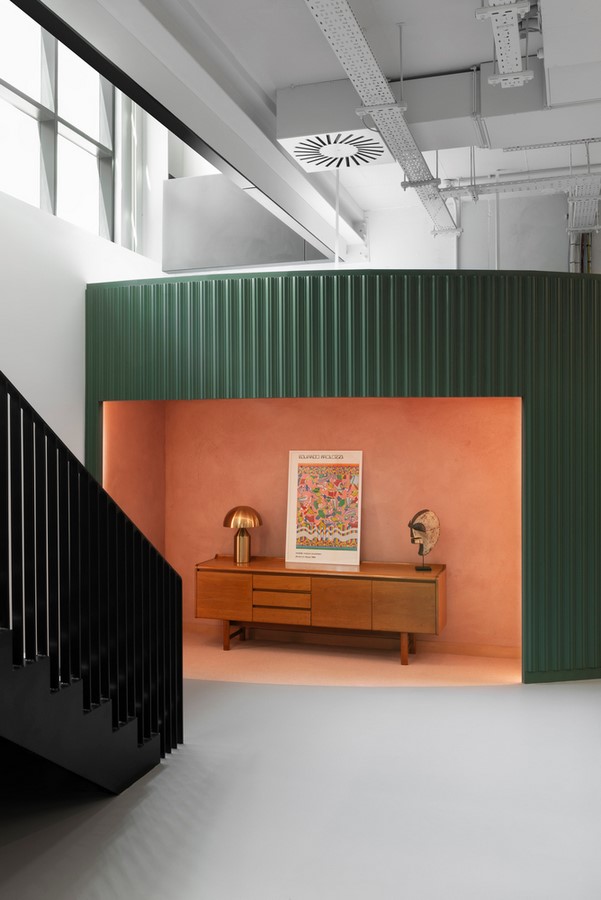
Social Core and Homely Atmosphere
The kitchen, clad in stainless steel and featuring handmade glazed ceramic tiles, acts as a central gathering space within one of the excavated cavities. Carefully curated furniture activates the space, enhancing comfort and homeliness amid the industrial aesthetic.
Seamless Integration for Diverse Work Cultures
The proposed layout offers a gradient of porous and permeable workspaces, accommodating diverse cultures, values, and behaviors. By seamlessly connecting different sectors into a unified plan, the design encourages discovery and exploration through layers of interconnected spaces.

Conclusion: A Visionary Workspace
Bureau de Change Architects’ innovative design for the Black Kite Offices not only reimagines industrial heritage but also fosters creativity, collaboration, and comfort within a dynamic workspace. This transformation exemplifies the adaptive reuse of industrial spaces for contemporary needs, bridging the past with the present in the heart of East London.
